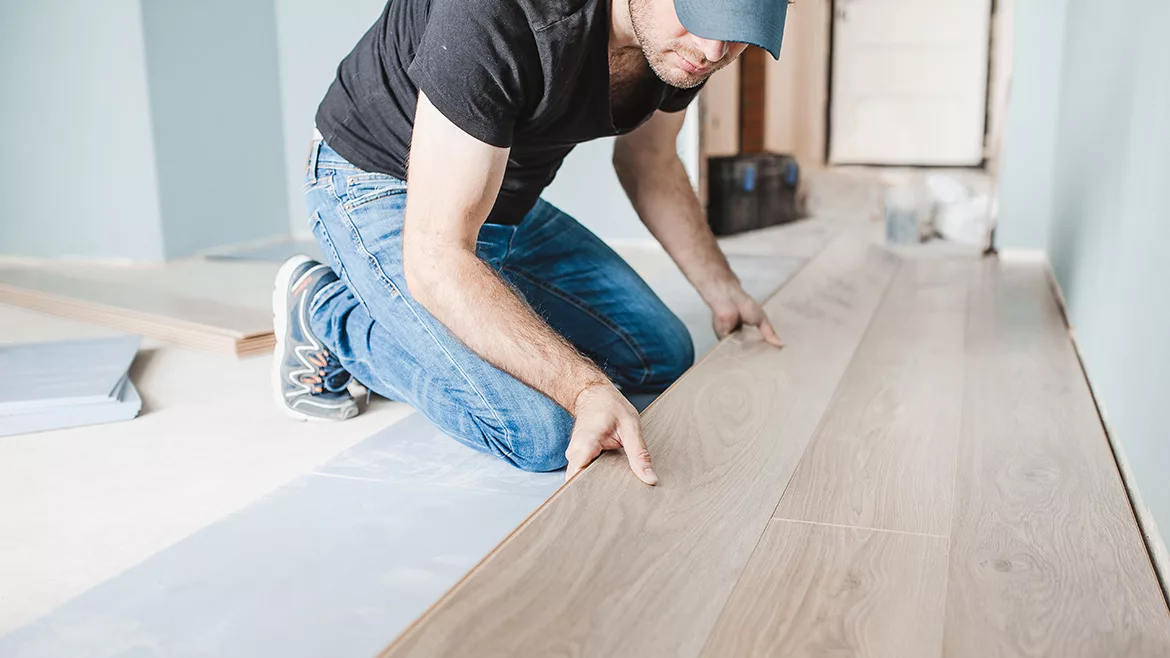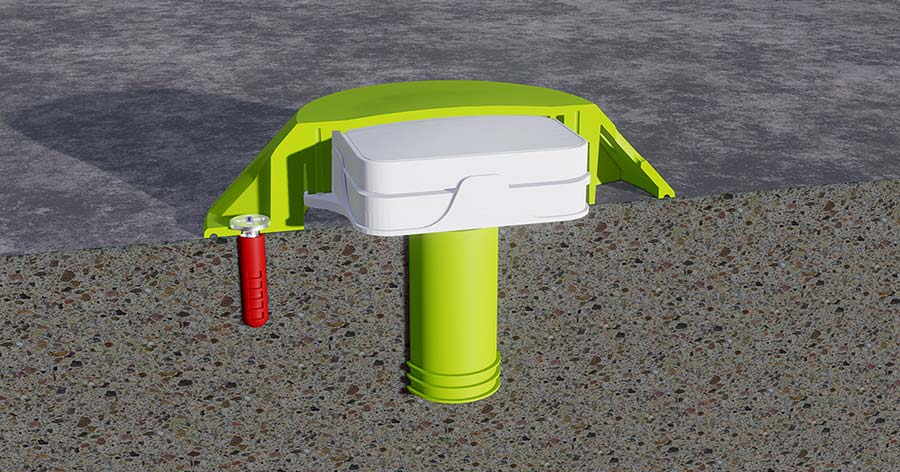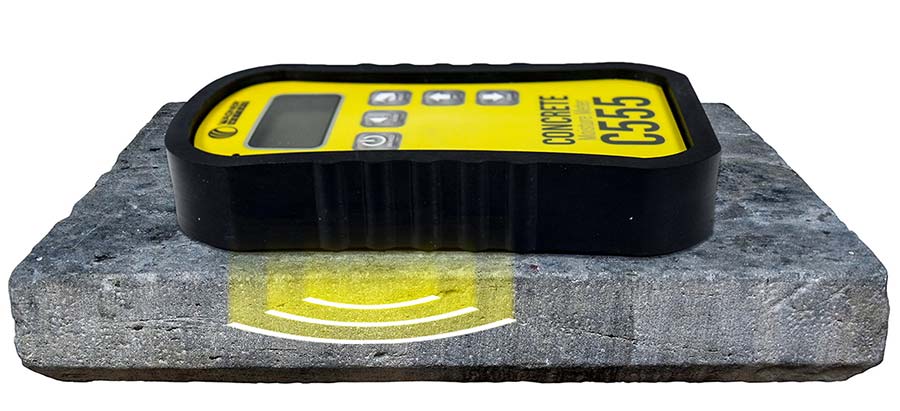Your Essential Guide to Using and Choosing Concrete Moisture Meters

Flooring installers must check the moisture levels of their concrete subfloors before installing flooring to prevent moisture damage.
Photo: andreygonchar.
Proper concrete moisture testing could mean the difference between success and failure with a commercial floor installation. Proper moisture testing involves using comprehensive methods like placing RH probes in the concrete. But how do you know where to put them for the most efficient testing?
A concrete moisture meter can highlight spots with the most moisture, guiding you on where to place RH probes. This way, you save yourself time and materials. And no placing of unnecessary probes!
So, let’s walk through this process and find out how concrete moisture meters can help with commercial floor installations. We’ll cover:
- Why concrete moisture testing matters
- Comprehensive and surface testing
- The role of concrete moisture meters
- What to look for when choosing a concrete moisture meter
First, a little on the importance of concrete moisture testing.
Why Concrete Moisture Testing Matters
The bottom line is this: concrete moisture testing helps you determine when it’s safe to install floor coverings without the risk of moisture damage.
Does the moisture level meet the manufacturer’s requirements or ASTM standards?
Then, you’ll know you can proceed with installation. If not, you’ll know to let the concrete subfloor dry before you put any flooring on top.
Otherwise, if you install a floor covering over concrete with excess moisture, the moisture could release into the floor above. This could cause that flooring material to warp, cup, buckle or develop mold. The damage may even be so bad that the floor will need to be replaced—which, of course, costs time and money.
Concrete moisture testing can prevent these issues, protecting your hard work and reputation.
Comprehensive Testing and Surface Testing
There are two types of concrete moisture tests—comprehensive and surface.
Comprehensive tests give an accurate understanding of how much moisture the concrete contains. They do this by measuring deep within the slab where most moisture is found.
The main comprehensive test is relative humidity (RH) testing. RH testing uses in-situ probes that are placed deep in the concrete to pick up accurate readings.
Meanwhile, surface testing, such as with a concrete moisture meter, doesn’t account for all the moisture inside the slab, so it won’t help you determine whether your subfloor is dry enough to install a floor on top. After all, you could get a low surface reading even when there’s a lot of moisture inside the slab.
However, concrete moisture meters still serve an important purpose.

Relative humidity testing probes are placed deep within concrete so they can better measure the slab’s moisture. Photo: Wagner Meters.
The Role of Concrete Moisture Meters
Concrete moisture meters may not give you an accurate picture of moisture deep within a slab, but they work well in tandem with RH tests. If they record high moisture levels on the surface, chances are that moisture is high deeper in the slab, too. In this way, concrete moisture meters can help identify “hot spots” or areas with high moisture levels where you should place RH probes.
You’ll want to pay special attention to these areas. If you ensure your highest moisture areas fall within acceptable moisture levels, then the rest of the slab will likely have reached suitable levels as well.
The benefit to you? They can help you monitor residential projects without drilling into the concrete subfloor.
And if you’re using it for commercial projects, you’ll save time and money by not placing unnecessary probes. Concrete moisture meters will also help your RH testing process be more efficient.

The C555 concrete moisture meter sends an electric signal into the concrete to determine how much moisture is on the surface of the slab. Photo: Wagner Meters.
Here’s what to do:
Place your concrete moisture meter on top of the concrete slab. The meter will send an electrical signal into the slab, and the sensor on the underside of the meter will use this signal to determine how much resistance the signal faces. Resistance levels will indicate how much moisture the concrete contains.
If you’re using a concrete moisture meter like Wagner’s C555, you’ll have a reading range of 0 to 6.9%. Higher readings mean higher moisture levels, while lower readings mean lower ones. Even if all your readings are on the lower side, put probes in the areas with the highest readings compared to the rest of the slab.
After you’ve used a concrete moisture meter, the RH tests will give you a better idea of how much moisture those hotspots contain. You’ll be able to trust those results and safely base your installation decisions on them. Per ASTM standards, you’re safe to install floor coverings if your subfloor has reached an RH of 75% or less—or the number specified by the floor manufacturer’s guidelines.
All of this is possible with the right tools. Let’s look at how to find the right concrete moisture meter.
Choosing a Concrete Moisture Meter
For the most efficient job, you’ll want a fast and accurate concrete moisture meter that:
- Is easy to use: User-friendly meters make the measurement process faster and easier.
- Meets ASTM standards: Concrete moisture meters should comply with ASTM F2659 for providing a preliminary evaluation of moisture conditions in the concrete.
- Makes it easy to compare readings: Since you’ll be keeping an eye on which areas of your concrete contain the most moisture, it will be helpful to have a meter that alerts you to the highest readings.
Wagner Meter’s concrete moisture meter, the C555, is a great option to consider. On top of being accurate, the C555:
- Meets the ASTM F2659 standard.
- Can be calibrated for the highest amount of accuracy possible: The C555 is the only concrete moisture meter that can be calibrated by users at the jobsite.
- Makes it easy to identify high-moisture areas: The C555 can alert you when readings go over a certain percentage. This can help you keep track of which readings are high compared to the rest of the concrete.
The Concrete Moisture Testing Duo
By quickly identifying surface moisture, the right moisture meter can help your commercial installation process go more smoothly. You’ll have a better idea of where moisture could be high under the surface, and you won’t have to spend as much time figuring out where to place your RH probes.
So, why not consider using this duo—the concrete moisture meter and the RH test?
Looking for a reprint of this article?
From high-res PDFs to custom plaques, order your copy today!





